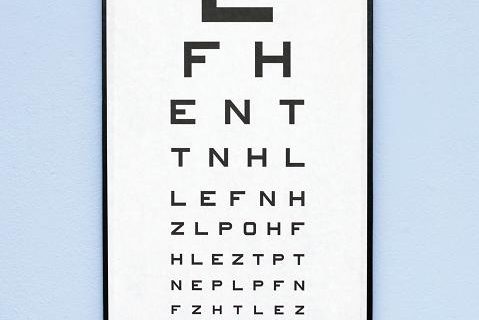Manfred Mareck
First published in Research World October 2010
Mobile and digital technologies are driving state-of-the-art techniques, but what else is new?
PDAs and mobile phones are increasingly being used as devices to collect diary data and have been used successfully in a number of countries. Still, they require active input from respondents and passive measurement remains a tempting alternative: it does not rely on respondents’ memory and portable meters can pick up media usage anywhere. Passive devices, such as GPS, play an increasingly important role in out-of-home measurement. According to Trevor Sharot of Red Research, “the technology will play a key part in the UK’s latest POSTAR survey”.
Broadcast audience measurement has long been reliant on technology, passive or otherwise. Digital television requires new channel detection methods and “audio signals are increasingly used as the primary detection technique”, so says Richard Marks, CEO of Kantar Media Audiences. Another priority is to reduce intrusiveness for the respondents. “We talk a lot about technology but I believe the most important element is the individual panel member. We need measurement systems that encourage high response and ensure representativeness.” Kantar now use predictive algorithms to identify individual viewers in conjunction with return-path-data (RPD), a data stream that is extracted from digital set-top boxes. It tracks channels viewed and other services used and requires no input from respondents.
Arbitron began testing portable people meters (PPMs) in 1995 and the company is on target to measure radio listening in the top 48 US metropolitan markets. According to Brad Bedford, VP of International Sales and Marketing at Arbitron, the technology has been licensed to BBM in Canada, and TNS/Kantar in Iceland, Belgium, Norway, Denmark, Kazakhstan, and Singapore. “It is primarily used for radio measurement but in Canada and Iceland the technology has currency status for television as well.”
Ipsos MediaCT is developing another passive meter. The MediaCell will be tested this year on a London-based panel. The device works on a Smartphone and recognises encoded audio signals, which are unique to the participating station and their platforms (AM/FM radio, digital radio, online, digital TV). Applications can then be used to ask supplementary questions. Compliance is often an issue and “that’s why the idea of putting software into a mobile phone that individuals carry around all the time is so exciting. Once Smartphone penetration reaches a certain level it will become an even more attractive method of data collection”, says John Carroll, senior director at Ipsos MediaCT. But restrictions, such as varying screen sizes, limited keyboard entry, or survey length remain. Smart phones may not always be with the respondent or left at home to recharge batteries, making them problematic as portable meters for out-of-home media measurement. As with any new technology solid evidence to gauge likely limitations is vital.
For TV there is the issue of measuring multiple screens. The UK system currently focuses on two screens, “mobile viewing still has a way to go and priority is to measure TV sets, to which we now have to add online” says Marks. TNS developed a software version of their people meter to measure viewing as if PCs were just another TV set to makes online measurement compatible with standard TV metrics. In the US “Nielsen’s strategy is now focussed on a three-screen model” says Pete Doe, SVP for Data Integration at Nielsen Media Research.
The challenge for broadcast research is to measure media usage across multiple platforms, anywhere and anytime. Developing user-friendly, modular, and flexible measurement technology that can accommodate changing viewing patterns will be crucial.
Cross Channel Measurement
Advertisers and agencies want to measure exposure over multiple media channels as media owners are increasingly offering their content across multiple platforms. That is why demand for multi-media evaluation tools (to be used complementary with the individual audience currencies) has been growing. Single source approaches, where each respondent provides data on all their media consumption, have not always been successful, hence the drive to integrate existing currencies into a cross-channel planning system.
Since 1985 the German Media Analyse (MA) measures press, TV, and radio in separate surveys, which are fused into the MA Intermedia. Data for outdoor media was added in 2008 and the plan is to include online measurement too. Currently a number of ‘new fusion’ approaches, including a time-budget Hub survey, are under discussion.
The ‘Hub plus fusion’ concept, successfully developed by the UK’s advertising agency association (IPA) and marketed under the TouchPoints brand, has already been replicated or tested in a number of markets, including Poland, France, Denmark and Norway. Even in the US the aversion to data integration is weakening. “Modelling and fusion have become more acceptable here with the development of ‘eyes-on’ measurement for outdoor”, says Arbitron’s Pierre Bouvard, EVP for Cross-Platform Services “and the drive for such initiatives is more likely to come from media owners, who have been faster off the mark to integrate their sales operations – agencies still often operate in silos.” One of the most enthusiastic supporters of cross-media measurement is Glenn Enoch, in charge of cross-platform measurement at ESPN. For a recent cross-media study during the FIFA World Cup, Enoch used specialist services of Keller Fay, Knowledge Networks, the Media Behavior Institute, the Nielsen Company, and the Wharton Interactive Media Initiative. Managing a multitude of vendors is challenging “but this is the future of cross-media measurement. We are working with these companies … to bring the industry closer to the day when measuring cross-platform behaviour is a standard practice instead of a specialist project”, says Enoch.
Engagement measures
Measuring net reach and frequency of exposure is no longer sufficient. Advertisers need measures, such as engagement and impact, in order to gauge the return on their advertising investment.
In the UK, Ipsos MediaCT is attempting to measure media engagement and “to find a consistent model that could work across media. We tested a wide range of statements that could potentially relate to engagement with respondents in the UK, France and the US and ended up with four pillars:
– Need fulfilment (thought out, emotional proximity)
– Quality/relevance/differentiation
– Perception (entertaining, respectable, credible, etc)
– Word of mouth (hear positive comments, recommend to friends)”
Explains Sarah Gale, director at Ipsos MediaCT. Right now this is still work in progress and whether high media brand engagement necessarily leads to high engagement with advertised brands is not yet clear. “We are in the process of exploring the advertising side, but that’s something we will continue to develop to get a full picture how engagement works”.
Since taking over Starch, GfK MRI has catalogued thousands of print advertisements according to more than 50 variables (coupons, recipes, barcodes, URL’s, etc). “This allows our clients to do searches based on specific elements contained within ads and understand which creative elements impact readership and consumer action,” reveals Michal Galin, SVP of Starch Advertising Research. Moreover, title-based audience scores can now be augmented with ad performance, an industry first. Starch results can now be combined with GfK MRI’s Issue Specific Study, which measures readership for individual issues of magazines to produce GfK MRO AdMeasure. With this new metric AdMeasure moves print accountability from ‘opportunity to see’ to an ‘actually saw / acted on’ ad measure. GfK MRI is currently testing an enhanced schedule planner that calculates reach of magazine schedules based on the number of individuals who actually see the ads within a scheduled title, and “brings the magazine industry a step closer to its goal of achieving the highest degree of return-on-investment metrics for print advertising,” so Kathi Love, President and CEO of GfK MRI.
Conclusion
There are many other challenges facing audience measurement. Print needs solutions to integrate conventional reading with online consumption and eReading via mobile devices. According Erhard Meier’s summary, at the 2009 Readership Symposium, some 40% of surveys published title-specific online reach. In various countries there are discussions to fuse Nielsen or ComScore online data with national readership survey results or to provide other print plus online net readership estimates, such as the Financial Times ‘average daily global audience’ scores.
Websites are under pressure to end the confusing array of available data and to offer standard currency measures. It is likely that hybrid solutions, using site-centric data and user panels are one way forward. Last but not least, the debate about the merits, and costs, of random- sample based surveys vs. the use of online panels is likely to continue into the foreseeable future.
Richard Marks is CEO of Kantar Media Audiences, John Carroll is senior director and Sarah Gale is director at Ipsos MediaCT, Glenn Enoch is vice president, audience research at ESPN; Michal Galin is SVP of Starch Advertising Research and Kathi Love is president and CEO at GfK MRI


